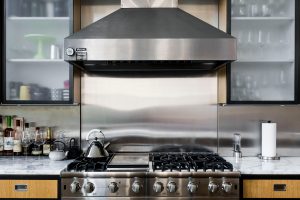
Stainless steel is a property notorious for its corrosion resistance and remarkable ability to resist stains. That said, stainless steel is broken down into different grades, each with slightly varying characteristics based on the chemical makeup. Below, we review the differences between grades 303 vs 304 stainless steel.
What is the Difference Between 303 and 304 Stainless Steel?
Grade 303 stainless steel is similar to grade 304 stainless, but with sulfur added to help increase machinability while maintaining both corrosion resistance and mechanical elements that are associated with stainless steel. The added sulfur decreases corrosion resistance of grade 303 when compared to grade 304, but for certain applications the machinability is worth the trade-off.
Grade 304 stainless is among the most popular alloys due to its incredible corrosion resistant properties. Its low carbon content makes it ideal for welding operations common to the construction industry, among others. Type 304 stainless is austenitic and non-magnetic, meaning it also provides low thermal and electrical conductivity.
Deciding whether to use grade 303 vs 304 stainless steel often comes down to determining what the application will be. There are several factors that come into play when choosing the type of stainless steel to use.
Durability
Stainless steel in general is naturally corrosion resistant. However, type 303 has a composition that’s been altered to increase machinability, so it’s weakened to corrosion resistance compared with grade 304. Type 304 stainless steel boasts incredible toughness and corrosion resistance but is susceptible to pitting in situations such as warm chloride-based environments.
Usability
Machinability, heat treatment, weldability – these are all important factors in the type of stainless steel you use for your application.
Type 303 stainless is a free-cutting material, with the best machinability of any austenitic stainless steel. That said, grade 303 steel is, for the most part, unweldable. Type 304 stainless doesn’t harden with heat treatment and is not a free-cutting material, making it less than ideal for use in machining. However, grade 304 stainless steel is relatively weldable.
Cost
Depending on project needs and the type of properties you’re looking for, costs can creep up quickly. Buying 303 stainless will typically run you a bit more than type 304, though costs change regularly depending on the market. The best way to navigate these changes is to work with an OEM vendor who can help you determine if your specific project requires a more expensive alloy.
What Are the Most Common Applications for 303 and 304 Stainless?
Grade 303 stainless is typically used for parts that need to be heavily machined, making it ideal for intricate, small components. Common applications include:
- Aircraft fittings and gears
- Bushings
- Electrical components
- Screws, nuts and bolts
Grade 304 stainless steel, due to its superior corrosion resistance and aesthetic, is more often found in applications such as:
- Aerospace components
- Architectural components
- Automotive parts
- Chemical containers
- Construction materials
- Food or liquid processing equipment
- Heat exchangers
- Kitchen appliances, surfaces and utensils
Contact the Experts at Atlantic Stainless
Atlantic Stainless offers a huge variety of stainless steel grades, including 300 series, 400 series, 600 series and more. Check out our online product catalog – if you see something you may be interested in, request a quote from us today.

